
ChatTTS
A generative speech model for daily dialogue.
Stars: 33897
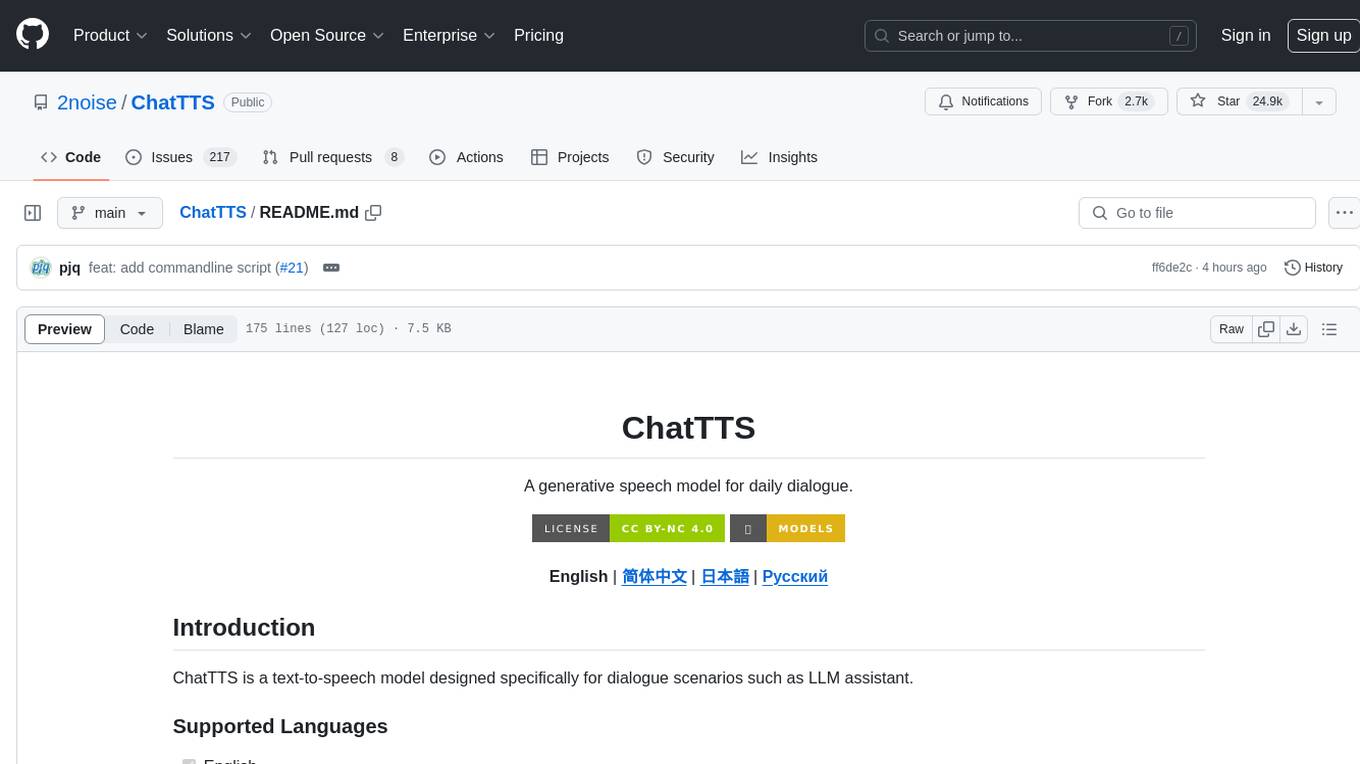
ChatTTS is a generative speech model optimized for dialogue scenarios, providing natural and expressive speech synthesis with fine-grained control over prosodic features. It supports multiple speakers and surpasses most open-source TTS models in terms of prosody. The model is trained with 100,000+ hours of Chinese and English audio data, and the open-source version on HuggingFace is a 40,000-hour pre-trained model without SFT. The roadmap includes open-sourcing additional features like VQ encoder, multi-emotion control, and streaming audio generation. The tool is intended for academic and research use only, with precautions taken to limit potential misuse.
README:
A generative speech model for daily dialogue.
[!Note] This repo contains the algorithm infrastructure and some simple examples.
[!Tip] For the extended end-user products, please refer to the index repo Awesome-ChatTTS maintained by the community.
ChatTTS is a text-to-speech model designed specifically for dialogue scenarios such as LLM assistant.
- [x] English
- [x] Chinese
- [ ] Coming Soon...
You can refer to this video on Bilibili for the detailed description.
- Conversational TTS: ChatTTS is optimized for dialogue-based tasks, enabling natural and expressive speech synthesis. It supports multiple speakers, facilitating interactive conversations.
- Fine-grained Control: The model could predict and control fine-grained prosodic features, including laughter, pauses, and interjections.
- Better Prosody: ChatTTS surpasses most of open-source TTS models in terms of prosody. We provide pretrained models to support further research and development.
[!Important] The released model is for academic purposes only.
- The main model is trained with Chinese and English audio data of 100,000+ hours.
- The open-source version on HuggingFace is a 40,000 hours pre-trained model without SFT.
- [x] Open-source the 40k-hours-base model and spk_stats file.
- [x] Streaming audio generation.
- [x] Open-source DVAE encoder and zero shot inferring code.
- [ ] Multi-emotion controlling.
- [ ] ChatTTS.cpp (new repo in
2noiseorg is welcomed)
The code is published under AGPLv3+ license.
The model is published under CC BY-NC 4.0 license. It is intended for educational and research use, and should not be used for any commercial or illegal purposes. The authors do not guarantee the accuracy, completeness, or reliability of the information. The information and data used in this repo, are for academic and research purposes only. The data obtained from publicly available sources, and the authors do not claim any ownership or copyright over the data.
ChatTTS is a powerful text-to-speech system. However, it is very important to utilize this technology responsibly and ethically. To limit the use of ChatTTS, we added a small amount of high-frequency noise during the training of the 40,000-hour model, and compressed the audio quality as much as possible using MP3 format, to prevent malicious actors from potentially using it for criminal purposes. At the same time, we have internally trained a detection model and plan to open-source it in the future.
GitHub issues/PRs are always welcomed.
For formal inquiries about the model and roadmap, please contact us at [email protected].
- Group 1, 808364215
- Group 2, 230696694
- Group 3, 933639842
- Group 4, 608667975
Join by clicking here.
git clone https://github.com/2noise/ChatTTS
cd ChatTTSpip install --upgrade -r requirements.txtconda create -n chattts python=3.11
conda activate chattts
pip install -r requirements.txtpip install safetensors vllm==0.2.7 torchaudio[!Warning] DO NOT INSTALL! The adaptation of TransformerEngine is currently under development and CANNOT run properly now. Only install it on developing purpose. See more details on at #672 #676
[!Note] The installation process is very slow.
pip install git+https://github.com/NVIDIA/TransformerEngine.git@stable[!Warning] DO NOT INSTALL! Currently the FlashAttention-2 will slow down the generating speed according to this issue. Only install it on developing purpose.
[!Note] See supported devices at the Hugging Face Doc.
pip install flash-attn --no-build-isolationMake sure you are under the project root directory when you execute these commands below.
python examples/web/webui.pyIt will save audio to
./output_audio_n.mp3
python examples/cmd/run.py "Your text 1." "Your text 2."- Install the stable version from PyPI
pip install ChatTTS- Install the latest version from GitHub
pip install git+https://github.com/2noise/ChatTTS- Install from local directory in dev mode
pip install -e .import ChatTTS
import torch
import torchaudio
chat = ChatTTS.Chat()
chat.load(compile=False) # Set to True for better performance
texts = ["PUT YOUR 1st TEXT HERE", "PUT YOUR 2nd TEXT HERE"]
wavs = chat.infer(texts)
for i in range(len(wavs)):
"""
In some versions of torchaudio, the first line works but in other versions, so does the second line.
"""
try:
torchaudio.save(f"basic_output{i}.wav", torch.from_numpy(wavs[i]).unsqueeze(0), 24000)
except:
torchaudio.save(f"basic_output{i}.wav", torch.from_numpy(wavs[i]), 24000)###################################
# Sample a speaker from Gaussian.
rand_spk = chat.sample_random_speaker()
print(rand_spk) # save it for later timbre recovery
params_infer_code = ChatTTS.Chat.InferCodeParams(
spk_emb = rand_spk, # add sampled speaker
temperature = .3, # using custom temperature
top_P = 0.7, # top P decode
top_K = 20, # top K decode
)
###################################
# For sentence level manual control.
# use oral_(0-9), laugh_(0-2), break_(0-7)
# to generate special token in text to synthesize.
params_refine_text = ChatTTS.Chat.RefineTextParams(
prompt='[oral_2][laugh_0][break_6]',
)
wavs = chat.infer(
texts,
params_refine_text=params_refine_text,
params_infer_code=params_infer_code,
)
###################################
# For word level manual control.
text = 'What is [uv_break]your favorite english food?[laugh][lbreak]'
wavs = chat.infer(text, skip_refine_text=True, params_refine_text=params_refine_text, params_infer_code=params_infer_code)
"""
In some versions of torchaudio, the first line works but in other versions, so does the second line.
"""
try:
torchaudio.save("word_level_output.wav", torch.from_numpy(wavs[0]).unsqueeze(0), 24000)
except:
torchaudio.save("word_level_output.wav", torch.from_numpy(wavs[0]), 24000)inputs_en = """
chat T T S is a text to speech model designed for dialogue applications.
[uv_break]it supports mixed language input [uv_break]and offers multi speaker
capabilities with precise control over prosodic elements like
[uv_break]laughter[uv_break][laugh], [uv_break]pauses, [uv_break]and intonation.
[uv_break]it delivers natural and expressive speech,[uv_break]so please
[uv_break] use the project responsibly at your own risk.[uv_break]
""".replace('\n', '') # English is still experimental.
params_refine_text = ChatTTS.Chat.RefineTextParams(
prompt='[oral_2][laugh_0][break_4]',
)
audio_array_en = chat.infer(inputs_en, params_refine_text=params_refine_text)
torchaudio.save("self_introduction_output.wav", torch.from_numpy(audio_array_en[0]), 24000)|
male speaker |
female speaker |
For a 30-second audio clip, at least 4GB of GPU memory is required. For the 4090 GPU, it can generate audio corresponding to approximately 7 semantic tokens per second. The Real-Time Factor (RTF) is around 0.3.
This is a problem that typically occurs with autoregressive models (for bark and valle). It's generally difficult to avoid. One can try multiple samples to find a suitable result.
In the current released model, the only token-level control units are [laugh], [uv_break], and [lbreak]. In future versions, we may open-source models with additional emotional control capabilities.
- bark, XTTSv2 and valle demonstrate a remarkable TTS result by an autoregressive-style system.
- fish-speech reveals capability of GVQ as audio tokenizer for LLM modeling.
- vocos which is used as a pretrained vocoder.
- wlu-audio lab for early algorithm experiments.
For Tasks:
Click tags to check more tools for each tasksFor Jobs:
Alternative AI tools for ChatTTS
Similar Open Source Tools

ChatTTS
ChatTTS is a generative speech model optimized for dialogue scenarios, providing natural and expressive speech synthesis with fine-grained control over prosodic features. It supports multiple speakers and surpasses most open-source TTS models in terms of prosody. The model is trained with 100,000+ hours of Chinese and English audio data, and the open-source version on HuggingFace is a 40,000-hour pre-trained model without SFT. The roadmap includes open-sourcing additional features like VQ encoder, multi-emotion control, and streaming audio generation. The tool is intended for academic and research use only, with precautions taken to limit potential misuse.
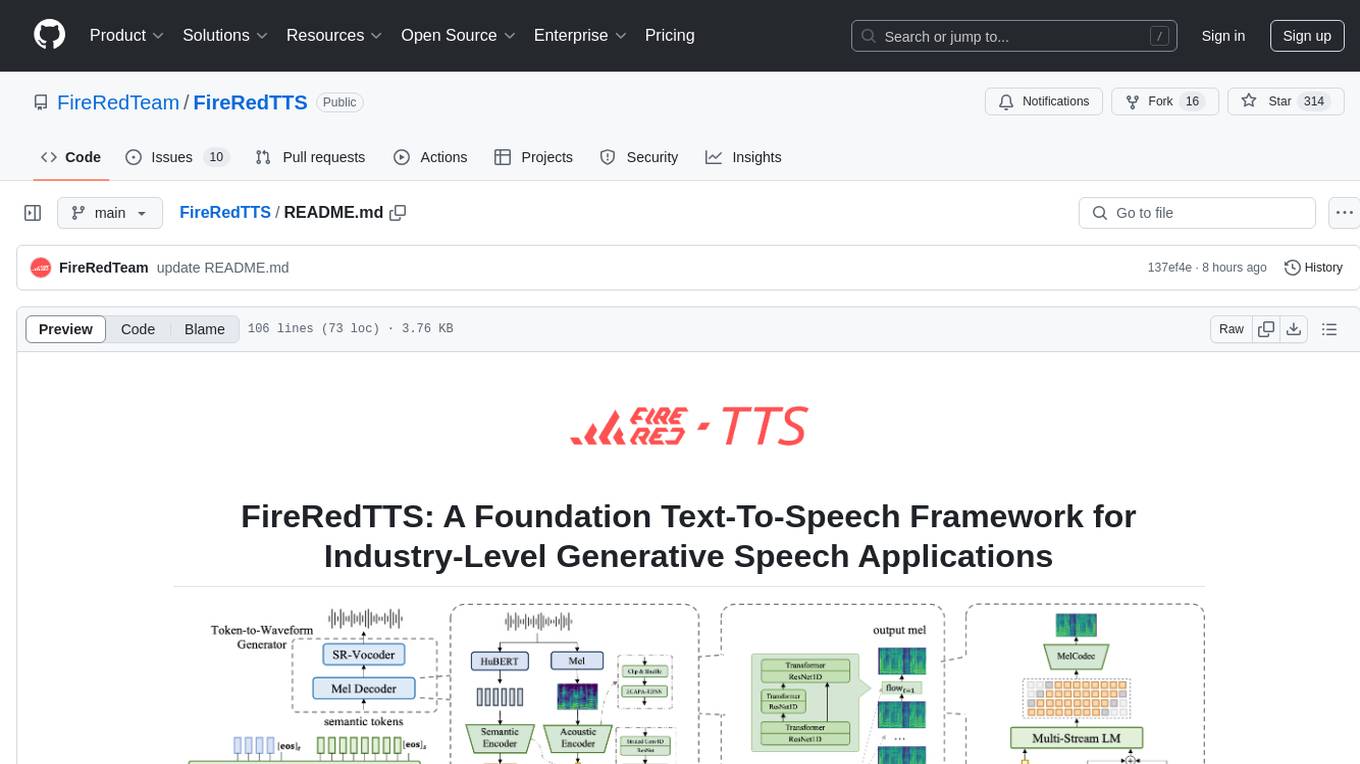
FireRedTTS
FireRedTTS is a foundation text-to-speech framework designed for industry-level generative speech applications. It offers a rich-punctuation model with expanded punctuation coverage and enhanced audio production consistency. The tool provides pre-trained checkpoints, inference code, and an interactive demo space. Users can clone the repository, create a conda environment, download required model files, and utilize the tool for synthesizing speech in various languages. FireRedTTS aims to enhance stability and provide controllable human-like speech generation capabilities.

Kord-Ai
Kord-Ai is a WhatsApp bot designed to automate interactions on WhatsApp by executing predefined commands or responding to user inputs. It can handle tasks like sending messages, sharing media, and managing group activities, providing convenience and efficiency for users and businesses. The bot offers features for deployment on various platforms, including Heroku, Replit, Koyeb, Glitch, Codespace, Render, Railway, VPS, and PC. Users can deploy the bot by obtaining a session ID, forking the repository, setting configurations in the Config.js file, and starting/stopping the bot using npm commands. It is important to note that Kord-Ai is a bot created by M3264, not affiliated with WhatsApp, and users should be cautious in its usage.
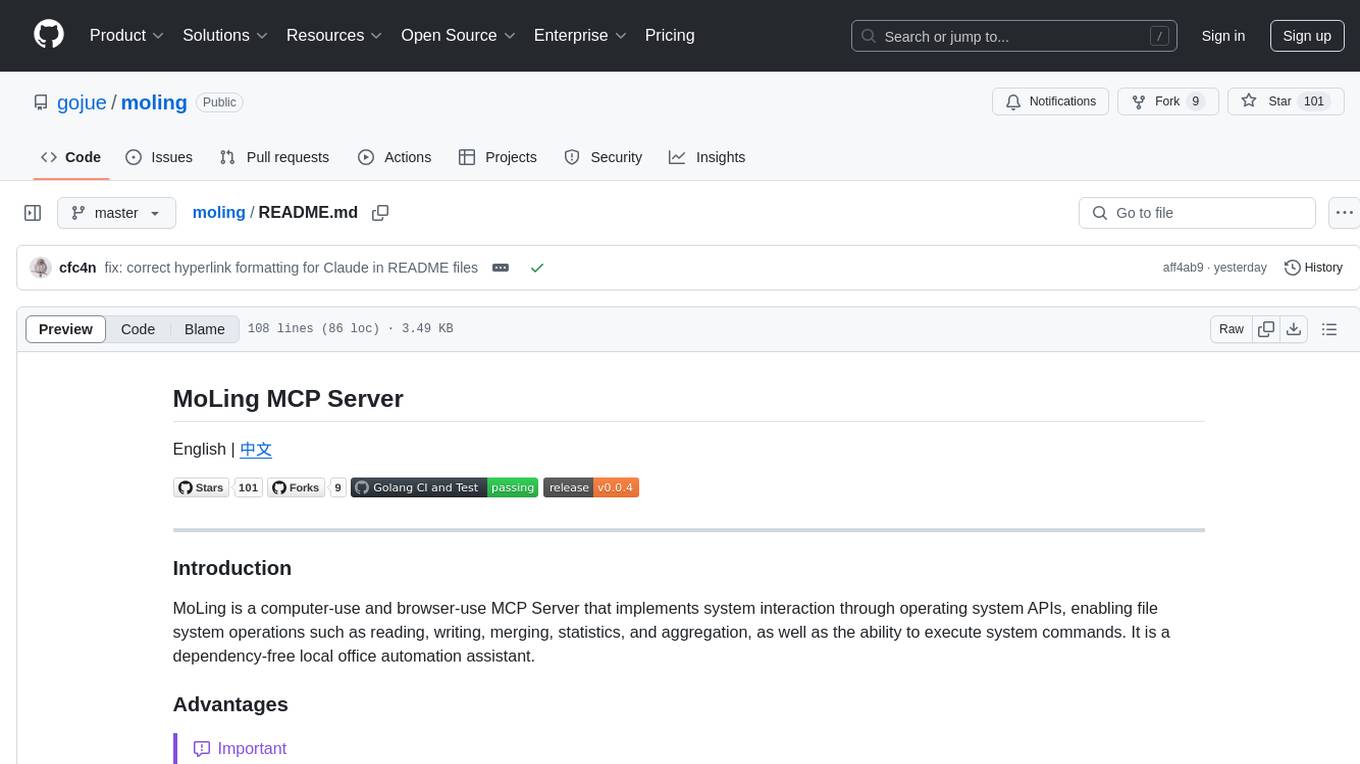
moling
MoLing is a computer-use and browser-use MCP Server that implements system interaction through operating system APIs, enabling file system operations such as reading, writing, merging, statistics, and aggregation, as well as the ability to execute system commands. It is a dependency-free local office automation assistant. Requiring no installation of any dependencies, MoLing can be run directly and is compatible with multiple operating systems, including Windows, Linux, and macOS. This eliminates the hassle of dealing with environment conflicts involving Node.js, Python, Docker, and other development environments. Command-line operations are dangerous and should be used with caution. MoLing supports features like file system operations, command-line terminal execution, browser control powered by 'github.com/chromedp/chromedp', and future plans for personal PC data organization, document writing assistance, schedule planning, and life assistant features. MoLing has been tested on macOS but may have issues on other operating systems.
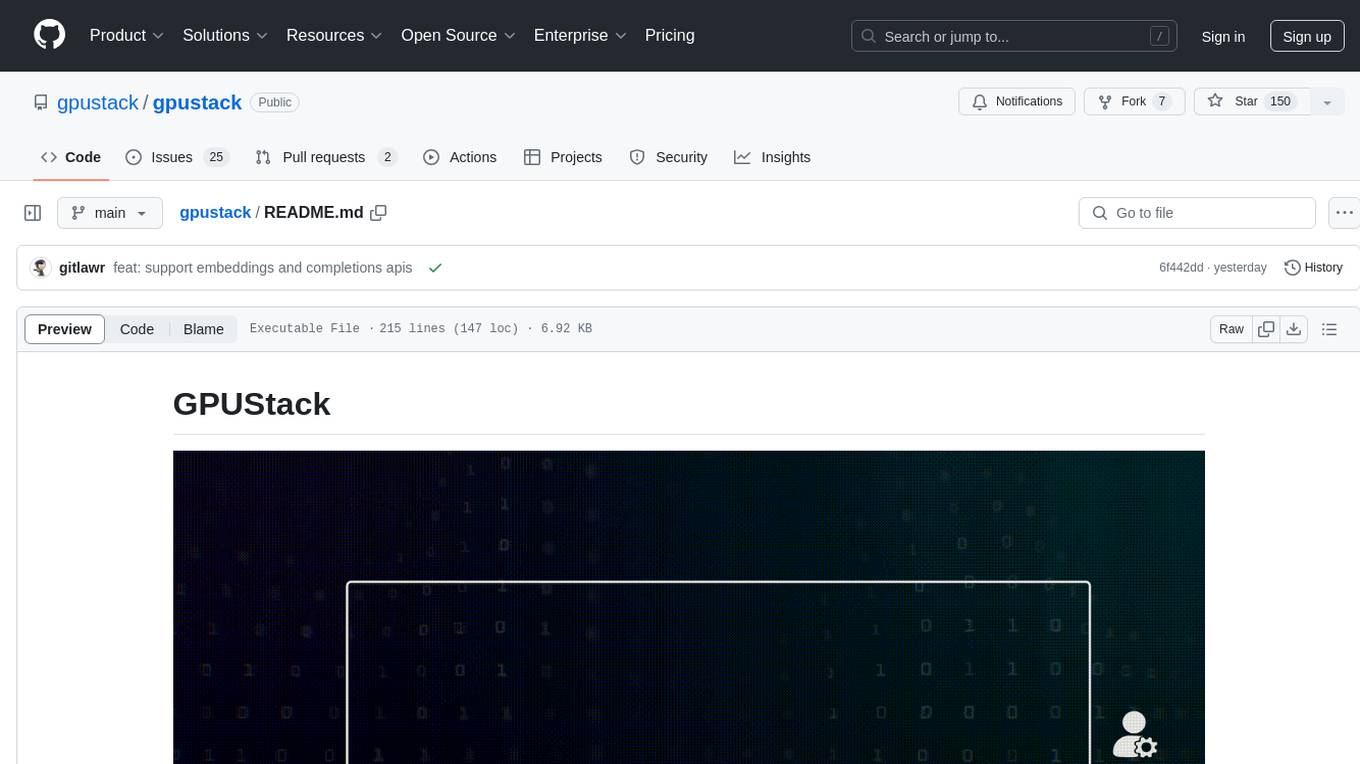
gpustack
GPUStack is an open-source GPU cluster manager designed for running large language models (LLMs). It supports a wide variety of hardware, scales with GPU inventory, offers lightweight Python package with minimal dependencies, provides OpenAI-compatible APIs, simplifies user and API key management, enables GPU metrics monitoring, and facilitates token usage and rate metrics tracking. The tool is suitable for managing GPU clusters efficiently and effectively.
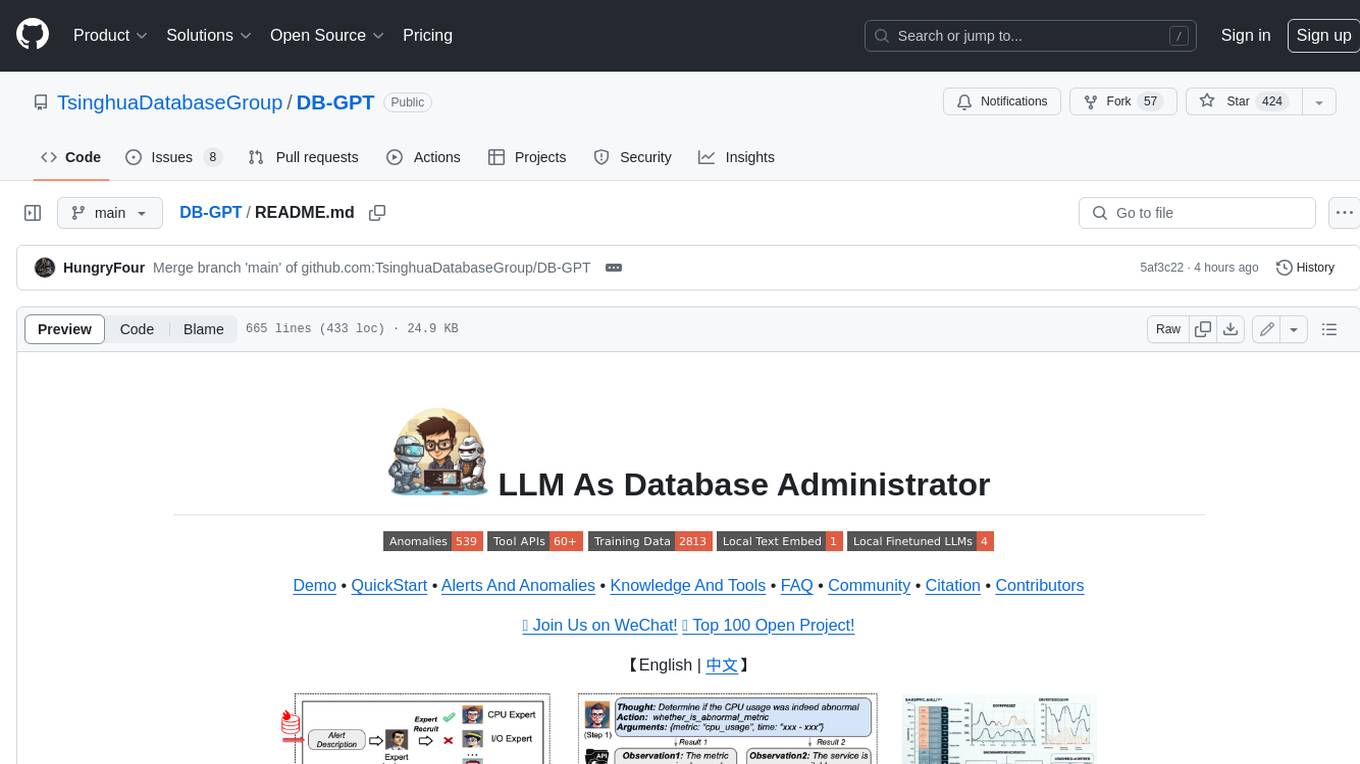
DB-GPT
DB-GPT is a personal database administrator that can solve database problems by reading documents, using various tools, and writing analysis reports. It is currently undergoing an upgrade. **Features:** * **Online Demo:** * Import documents into the knowledge base * Utilize the knowledge base for well-founded Q&A and diagnosis analysis of abnormal alarms * Send feedbacks to refine the intermediate diagnosis results * Edit the diagnosis result * Browse all historical diagnosis results, used metrics, and detailed diagnosis processes * **Language Support:** * English (default) * Chinese (add "language: zh" in config.yaml) * **New Frontend:** * Knowledgebase + Chat Q&A + Diagnosis + Report Replay * **Extreme Speed Version for localized llms:** * 4-bit quantized LLM (reducing inference time by 1/3) * vllm for fast inference (qwen) * Tiny LLM * **Multi-path extraction of document knowledge:** * Vector database (ChromaDB) * RESTful Search Engine (Elasticsearch) * **Expert prompt generation using document knowledge** * **Upgrade the LLM-based diagnosis mechanism:** * Task Dispatching -> Concurrent Diagnosis -> Cross Review -> Report Generation * Synchronous Concurrency Mechanism during LLM inference * **Support monitoring and optimization tools in multiple levels:** * Monitoring metrics (Prometheus) * Flame graph in code level * Diagnosis knowledge retrieval (dbmind) * Logical query transformations (Calcite) * Index optimization algorithms (for PostgreSQL) * Physical operator hints (for PostgreSQL) * Backup and Point-in-time Recovery (Pigsty) * **Continuously updated papers and experimental reports** This project is constantly evolving with new features. Don't forget to star ⭐ and watch 👀 to stay up to date.
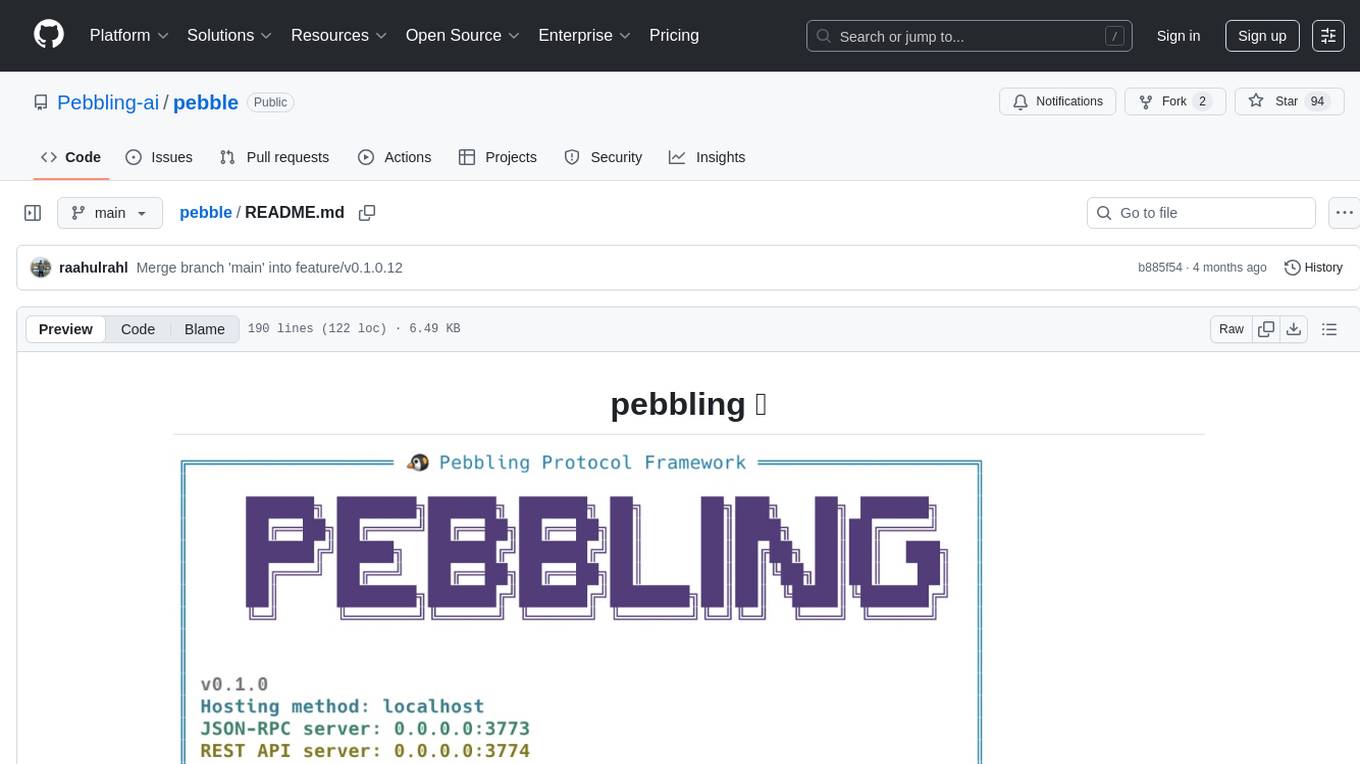
pebble
Pebbling is an open-source protocol for agent-to-agent communication, enabling AI agents to collaborate securely using Decentralised Identifiers (DIDs) and mutual TLS (mTLS). It provides a lightweight communication protocol built on JSON-RPC 2.0, ensuring reliable and secure conversations between agents. Pebbling allows agents to exchange messages safely, connect seamlessly regardless of programming language, and communicate quickly and efficiently. It is designed to pave the way for the next generation of collaborative AI systems, promoting secure and effortless communication between agents across different environments.
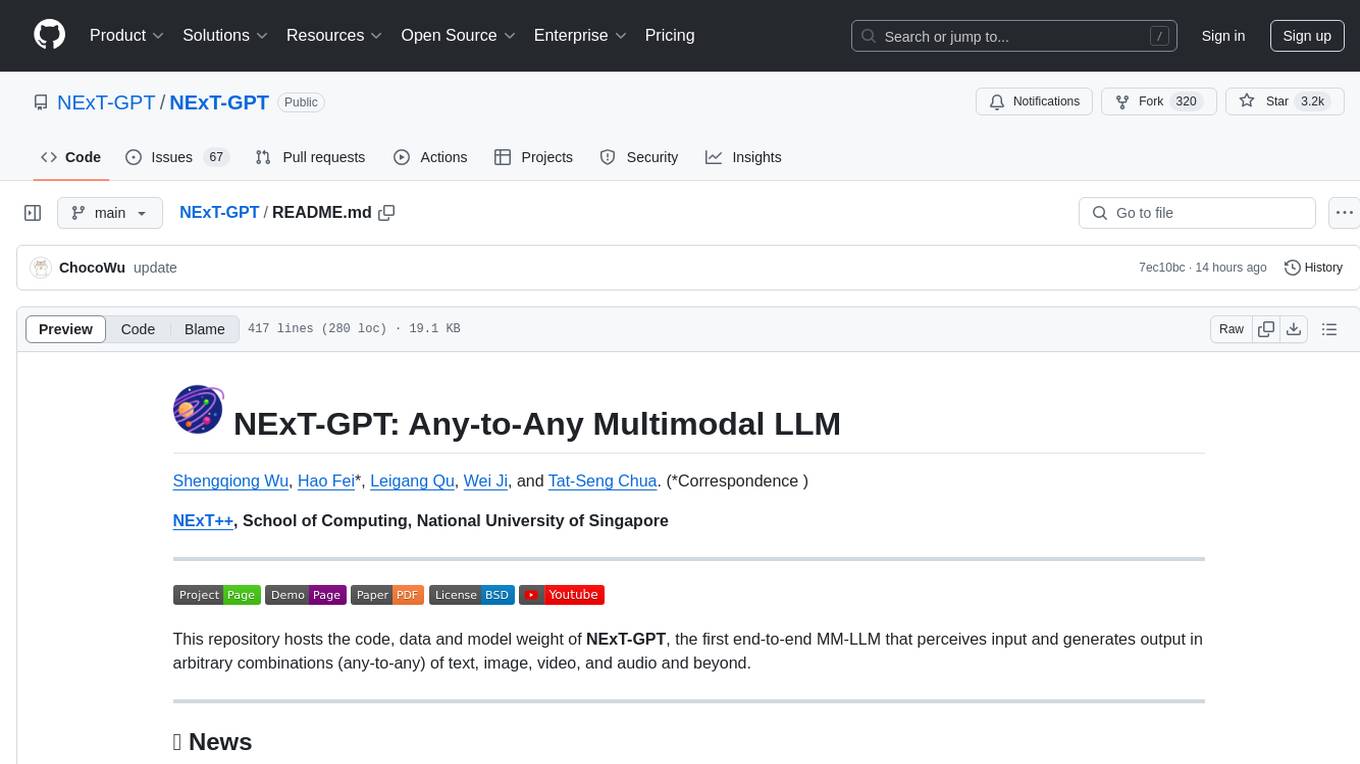
NExT-GPT
NExT-GPT is an end-to-end multimodal large language model that can process input and generate output in various combinations of text, image, video, and audio. It leverages existing pre-trained models and diffusion models with end-to-end instruction tuning. The repository contains code, data, and model weights for NExT-GPT, allowing users to work with different modalities and perform tasks like encoding, understanding, reasoning, and generating multimodal content.
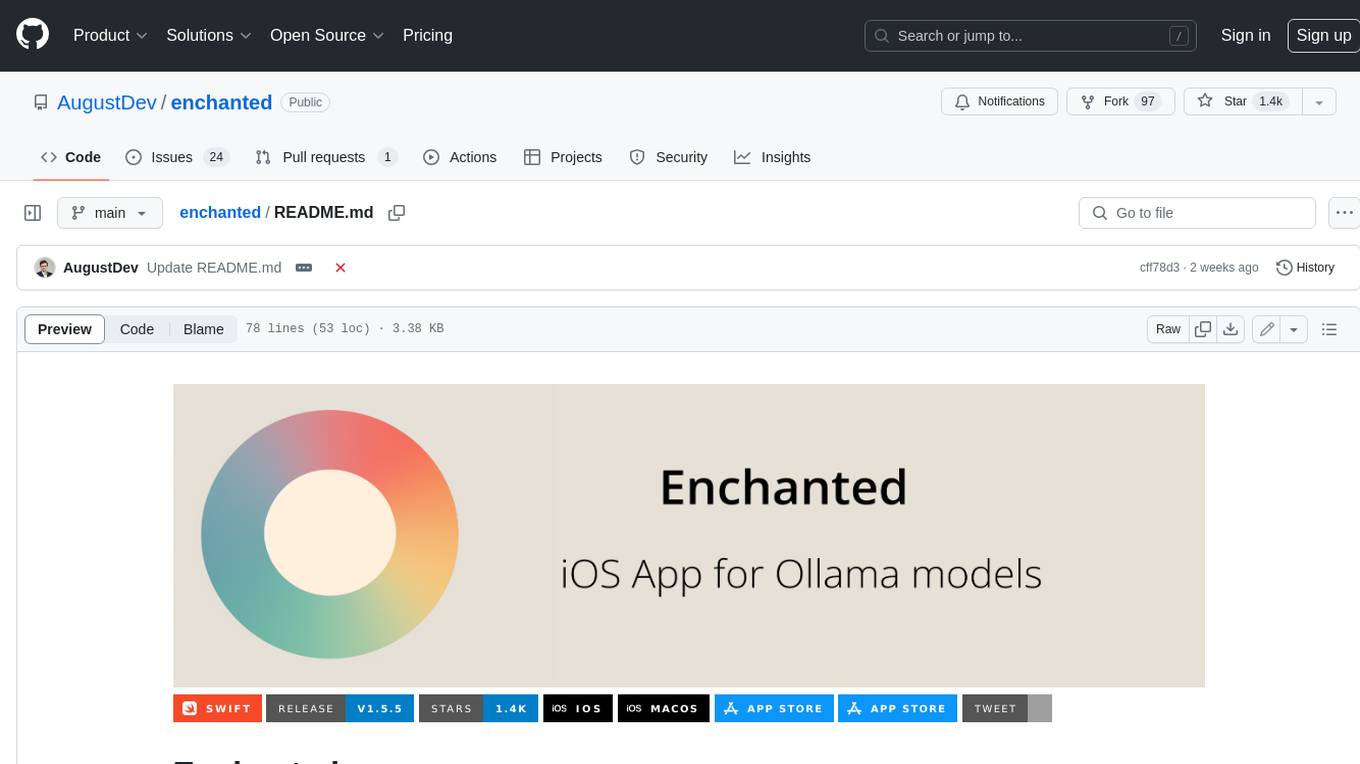
enchanted
Enchanted is an open-source, Ollama-compatible app for macOS and iOS that allows users to work with privately hosted models such as Llama 2, Mistral, Vicuna, Starling, and more. It provides a user-friendly interface for interacting with these models, making it easy to generate text, translate languages, write different kinds of creative content, and more. The app is designed to be secure and private, ensuring that user data is protected. It also offers a range of features such as dark/light mode, conversation history, markdown support, voice prompts, and image attachments.
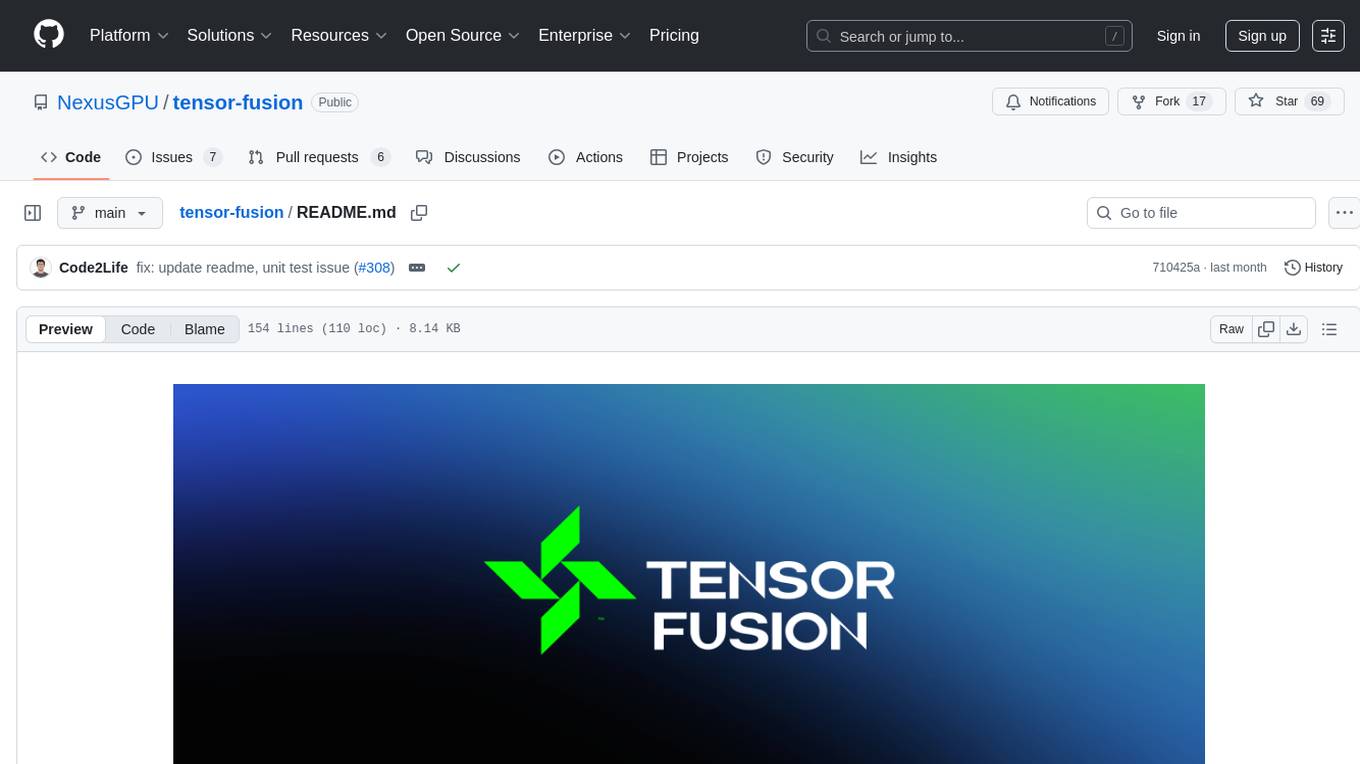
tensor-fusion
Tensor Fusion is a state-of-the-art GPU virtualization and pooling solution designed to optimize GPU cluster utilization. It offers features like fractional virtual GPU, remote GPU sharing, GPU-first scheduling, GPU oversubscription, GPU pooling, monitoring, live migration, and more. The tool aims to enhance GPU utilization efficiency and streamline AI infrastructure management for organizations.
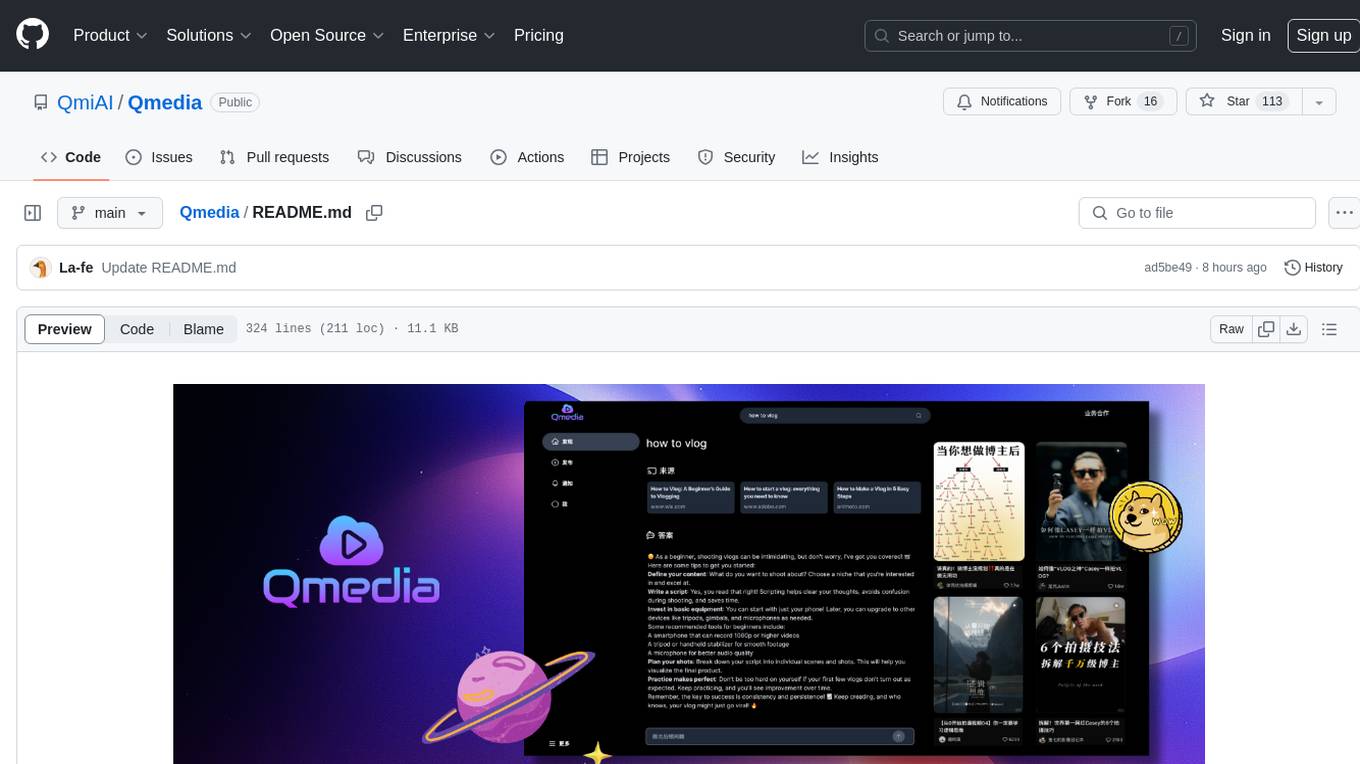
Qmedia
QMedia is an open-source multimedia AI content search engine designed specifically for content creators. It provides rich information extraction methods for text, image, and short video content. The tool integrates unstructured text, image, and short video information to build a multimodal RAG content Q&A system. Users can efficiently search for image/text and short video materials, analyze content, provide content sources, and generate customized search results based on user interests and needs. QMedia supports local deployment for offline content search and Q&A for private data. The tool offers features like content cards display, multimodal content RAG search, and pure local multimodal models deployment. Users can deploy different types of models locally, manage language models, feature embedding models, image models, and video models. QMedia aims to spark new ideas for content creation and share AI content creation concepts in an open-source manner.

agentic-radar
The Agentic Radar is a security scanner designed to analyze and assess agentic systems for security and operational insights. It helps users understand how agentic systems function, identify potential vulnerabilities, and create security reports. The tool includes workflow visualization, tool identification, and vulnerability mapping, providing a comprehensive HTML report for easy reviewing and sharing. It simplifies the process of assessing complex workflows and multiple tools used in agentic systems, offering a structured view of potential risks and security frameworks.

infinity
Infinity is an AI-native database designed for LLM applications, providing incredibly fast full-text and vector search capabilities. It supports a wide range of data types, including vectors, full-text, and structured data, and offers a fused search feature that combines multiple embeddings and full text. Infinity is easy to use, with an intuitive Python API and a single-binary architecture that simplifies deployment. It achieves high performance, with 0.1 milliseconds query latency on million-scale vector datasets and up to 15K QPS.
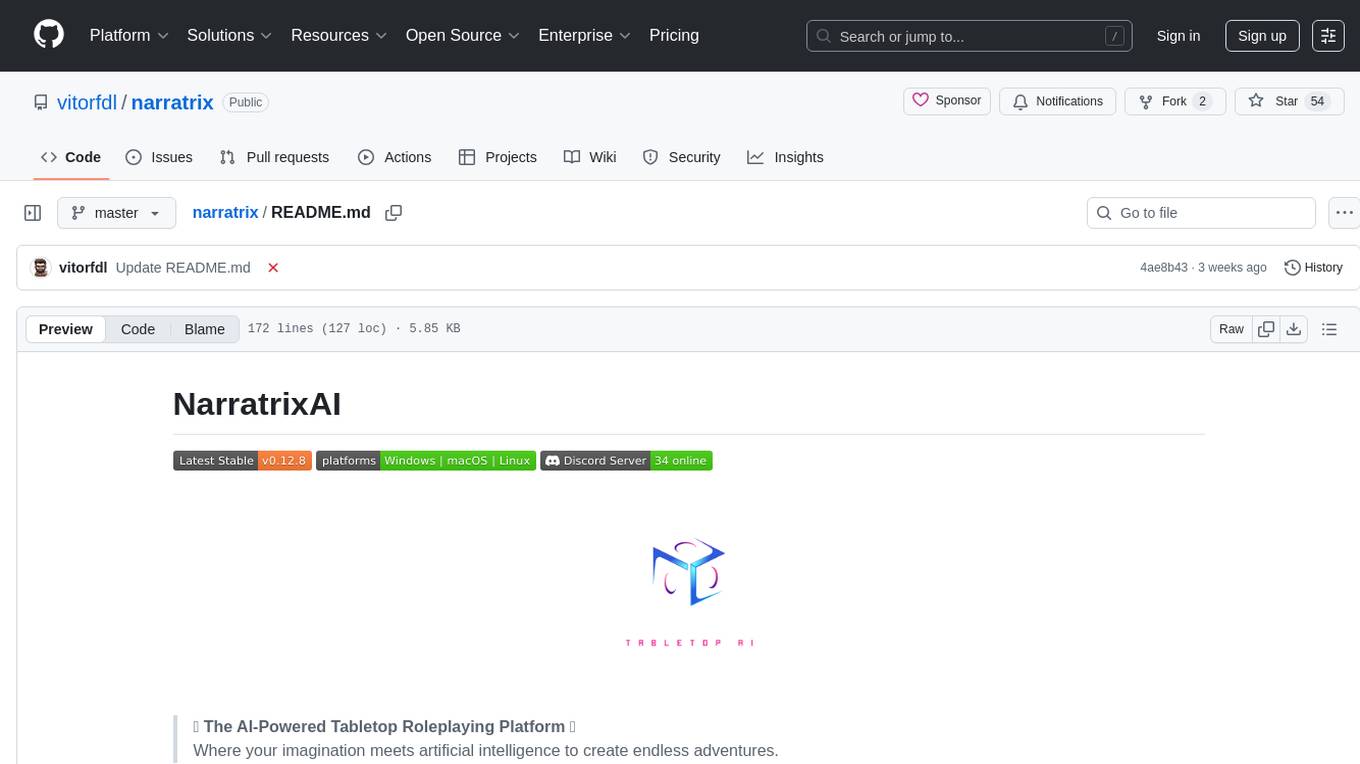
narratrix
NarratrixAI is an AI-powered tabletop roleplaying platform that leverages AI to create dynamic, responsive, and immersive storytelling experiences. It allows users to create their own stories, use it as character chat, or as a full tabletop RPG experience. The platform features a powerful chat system, flexible AI integration, rich character management, powerful storytelling tools, and developer-friendly customization options. Narratrix supports various AI providers through a manifest system and is built with Tauri for native performance across Windows, macOS, and Linux platforms.
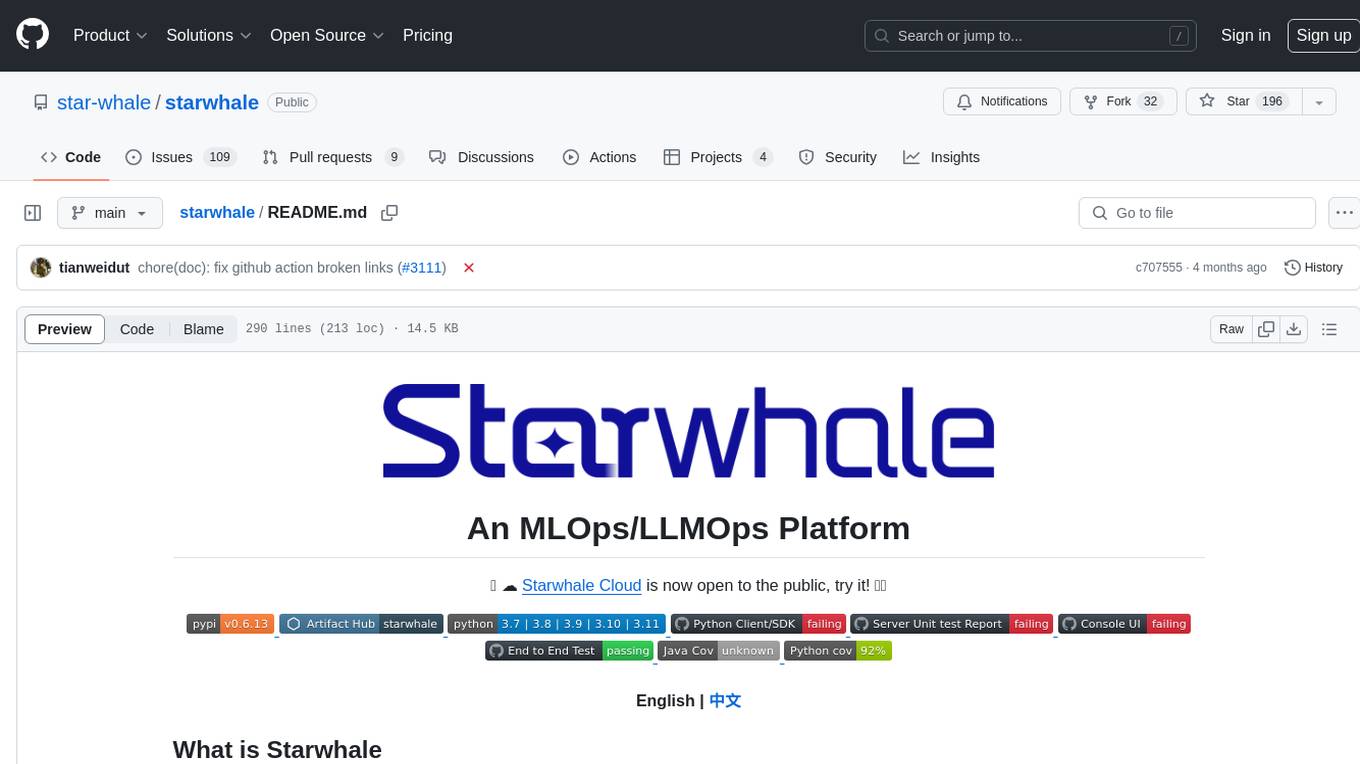
starwhale
Starwhale is an MLOps/LLMOps platform that brings efficiency and standardization to machine learning operations. It streamlines the model development lifecycle, enabling teams to optimize workflows around key areas like model building, evaluation, release, and fine-tuning. Starwhale abstracts Model, Runtime, and Dataset as first-class citizens, providing tailored capabilities for common workflow scenarios including Models Evaluation, Live Demo, and LLM Fine-tuning. It is an open-source platform designed for clarity and ease of use, empowering developers to build customized MLOps features tailored to their needs.
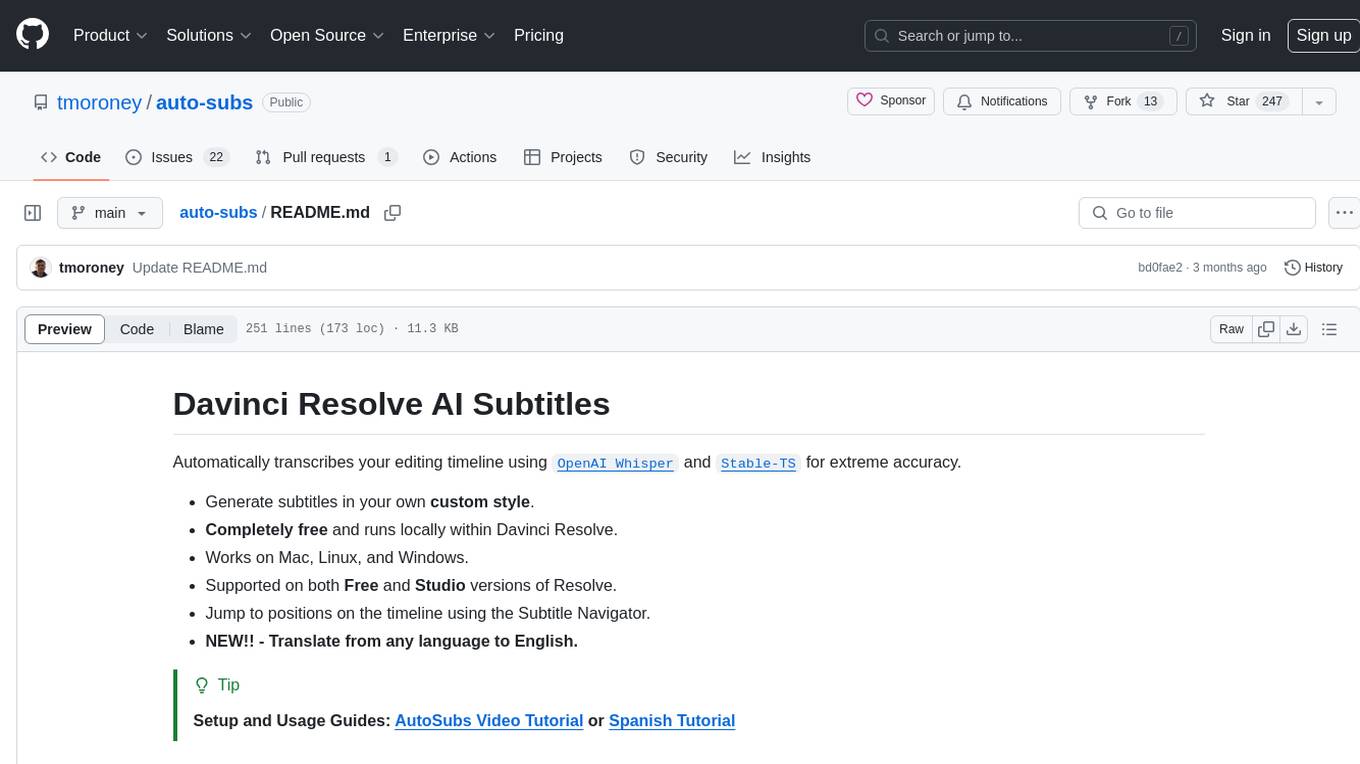
auto-subs
Auto-subs is a tool designed to automatically transcribe editing timelines using OpenAI Whisper and Stable-TS for extreme accuracy. It generates subtitles in a custom style, is completely free, and runs locally within Davinci Resolve. It works on Mac, Linux, and Windows, supporting both Free and Studio versions of Resolve. Users can jump to positions on the timeline using the Subtitle Navigator and translate from any language to English. The tool provides a user-friendly interface for creating and customizing subtitles for video content.
For similar tasks

ChatTTS
ChatTTS is a generative speech model optimized for dialogue scenarios, providing natural and expressive speech synthesis with fine-grained control over prosodic features. It supports multiple speakers and surpasses most open-source TTS models in terms of prosody. The model is trained with 100,000+ hours of Chinese and English audio data, and the open-source version on HuggingFace is a 40,000-hour pre-trained model without SFT. The roadmap includes open-sourcing additional features like VQ encoder, multi-emotion control, and streaming audio generation. The tool is intended for academic and research use only, with precautions taken to limit potential misuse.
For similar jobs
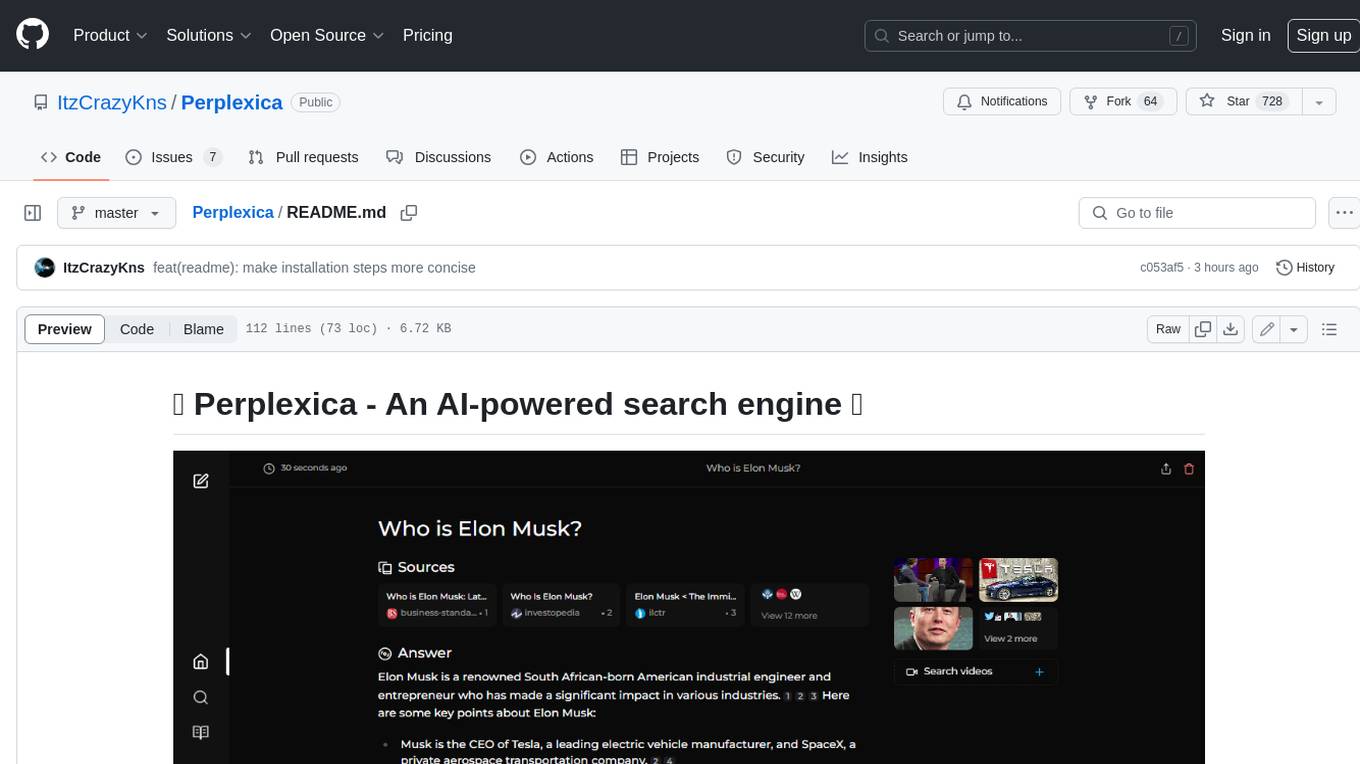
Perplexica
Perplexica is an open-source AI-powered search engine that utilizes advanced machine learning algorithms to provide clear answers with sources cited. It offers various modes like Copilot Mode, Normal Mode, and Focus Modes for specific types of questions. Perplexica ensures up-to-date information by using SearxNG metasearch engine. It also features image and video search capabilities and upcoming features include finalizing Copilot Mode and adding Discover and History Saving features.
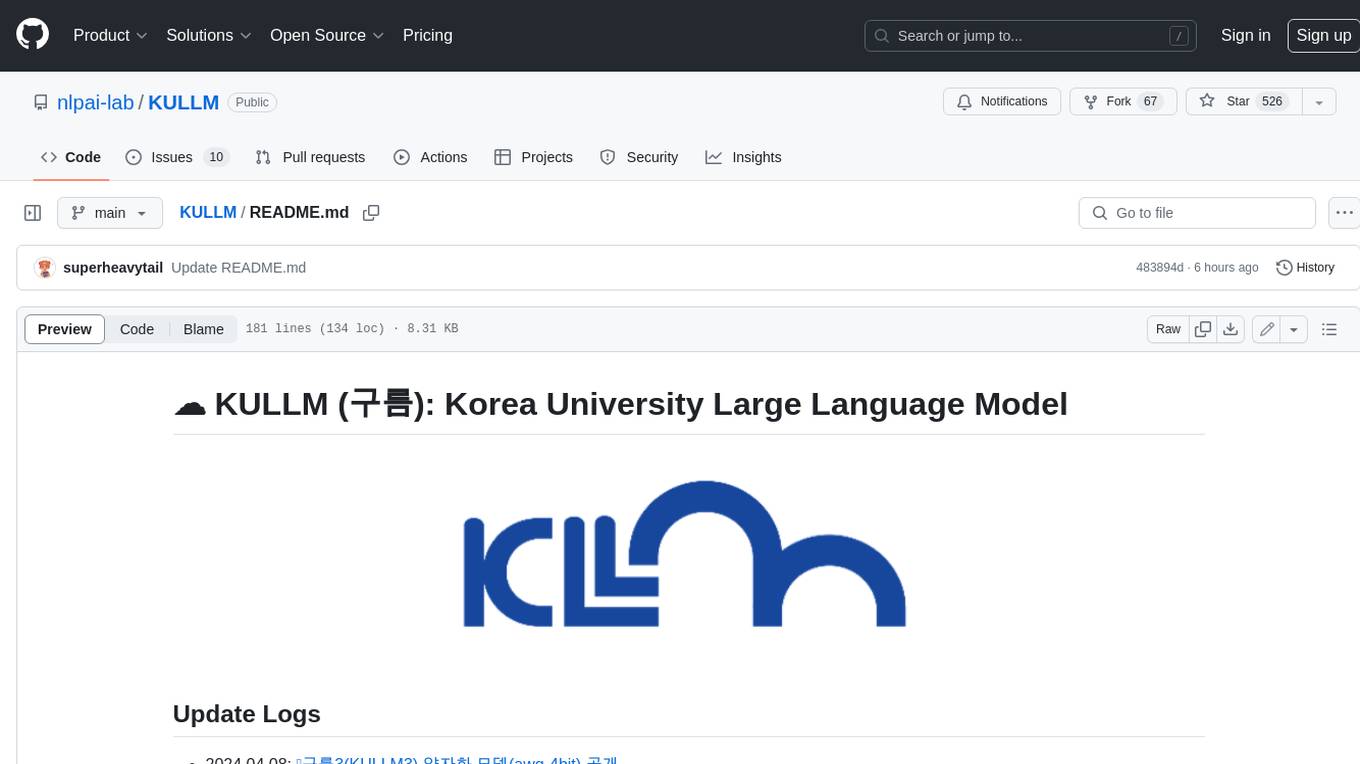
KULLM
KULLM (구름) is a Korean Large Language Model developed by Korea University NLP & AI Lab and HIAI Research Institute. It is based on the upstage/SOLAR-10.7B-v1.0 model and has been fine-tuned for instruction. The model has been trained on 8×A100 GPUs and is capable of generating responses in Korean language. KULLM exhibits hallucination and repetition phenomena due to its decoding strategy. Users should be cautious as the model may produce inaccurate or harmful results. Performance may vary in benchmarks without a fixed system prompt.
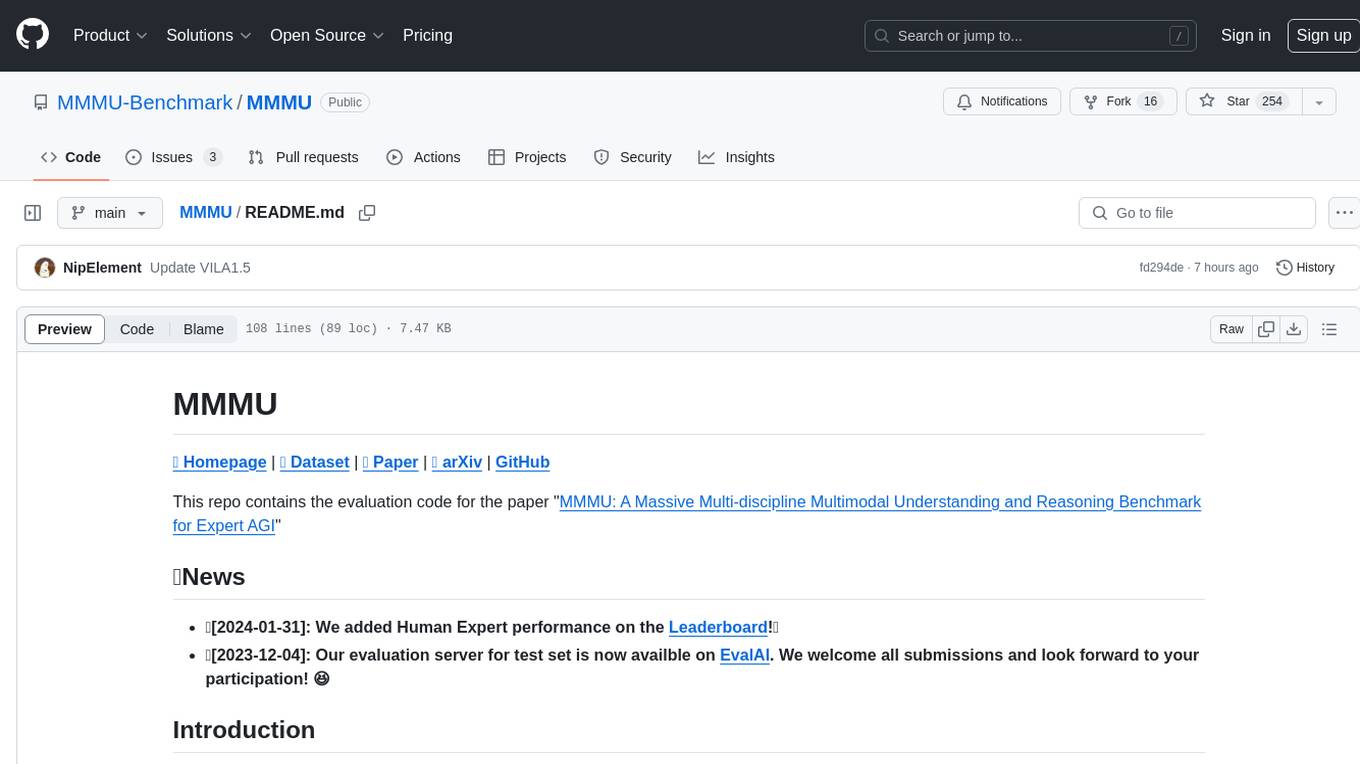
MMMU
MMMU is a benchmark designed to evaluate multimodal models on college-level subject knowledge tasks, covering 30 subjects and 183 subfields with 11.5K questions. It focuses on advanced perception and reasoning with domain-specific knowledge, challenging models to perform tasks akin to those faced by experts. The evaluation of various models highlights substantial challenges, with room for improvement to stimulate the community towards expert artificial general intelligence (AGI).
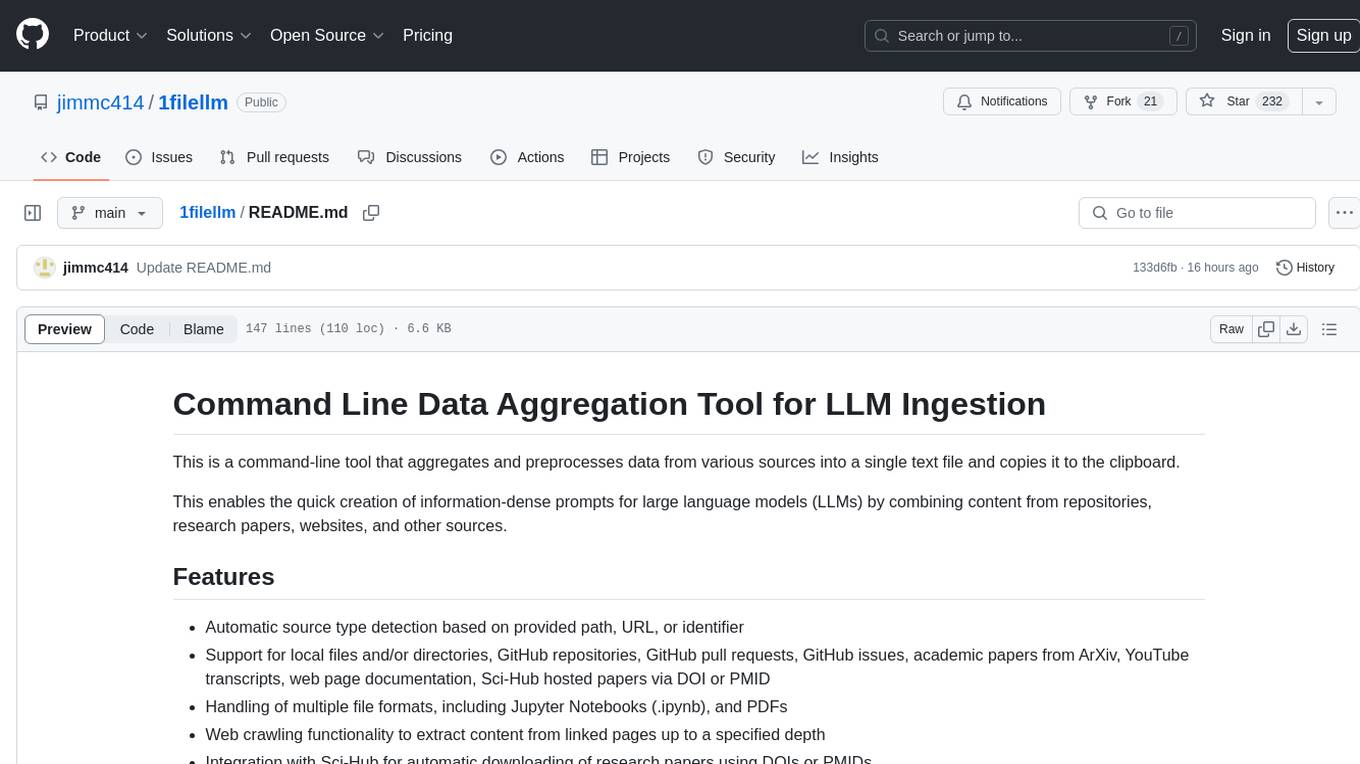
1filellm
1filellm is a command-line data aggregation tool designed for LLM ingestion. It aggregates and preprocesses data from various sources into a single text file, facilitating the creation of information-dense prompts for large language models. The tool supports automatic source type detection, handling of multiple file formats, web crawling functionality, integration with Sci-Hub for research paper downloads, text preprocessing, and token count reporting. Users can input local files, directories, GitHub repositories, pull requests, issues, ArXiv papers, YouTube transcripts, web pages, Sci-Hub papers via DOI or PMID. The tool provides uncompressed and compressed text outputs, with the uncompressed text automatically copied to the clipboard for easy pasting into LLMs.
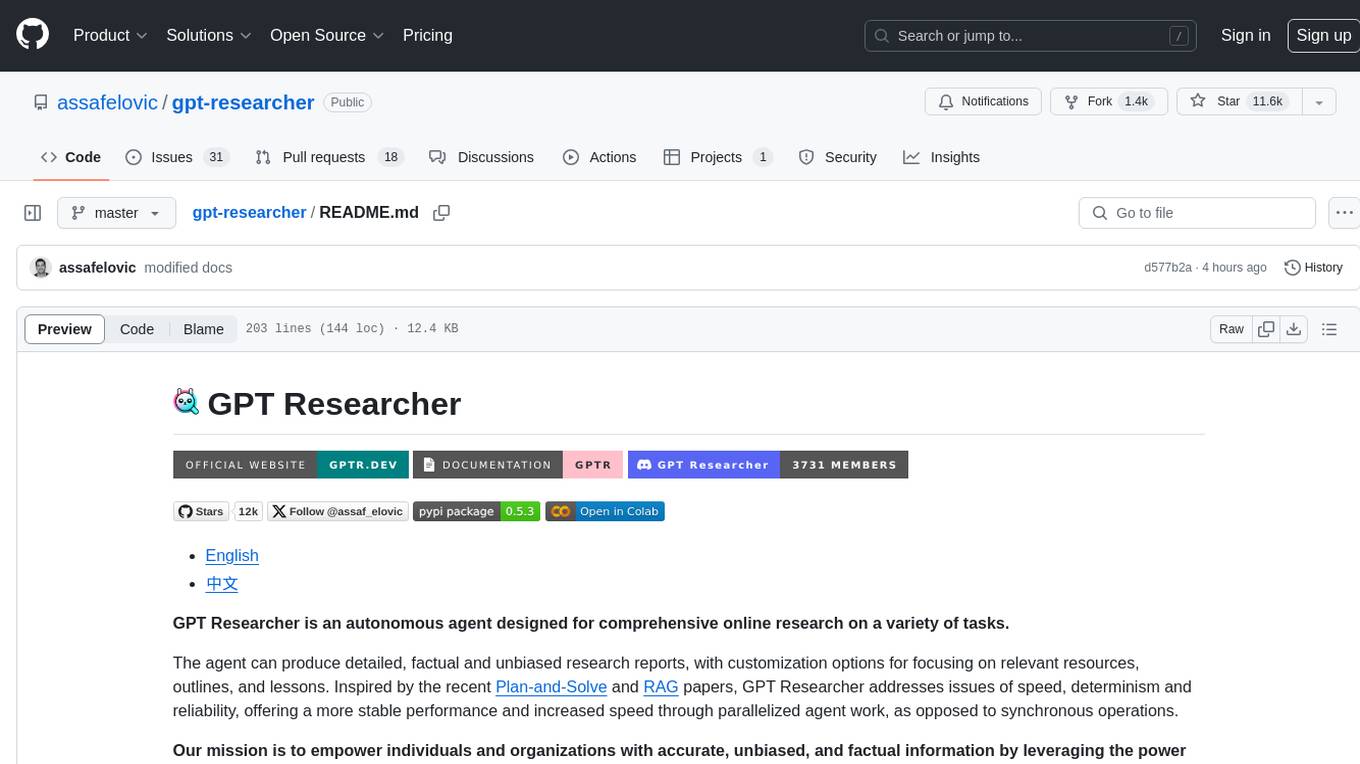
gpt-researcher
GPT Researcher is an autonomous agent designed for comprehensive online research on a variety of tasks. It can produce detailed, factual, and unbiased research reports with customization options. The tool addresses issues of speed, determinism, and reliability by leveraging parallelized agent work. The main idea involves running 'planner' and 'execution' agents to generate research questions, seek related information, and create research reports. GPT Researcher optimizes costs and completes tasks in around 3 minutes. Features include generating long research reports, aggregating web sources, an easy-to-use web interface, scraping web sources, and exporting reports to various formats.

ChatTTS
ChatTTS is a generative speech model optimized for dialogue scenarios, providing natural and expressive speech synthesis with fine-grained control over prosodic features. It supports multiple speakers and surpasses most open-source TTS models in terms of prosody. The model is trained with 100,000+ hours of Chinese and English audio data, and the open-source version on HuggingFace is a 40,000-hour pre-trained model without SFT. The roadmap includes open-sourcing additional features like VQ encoder, multi-emotion control, and streaming audio generation. The tool is intended for academic and research use only, with precautions taken to limit potential misuse.
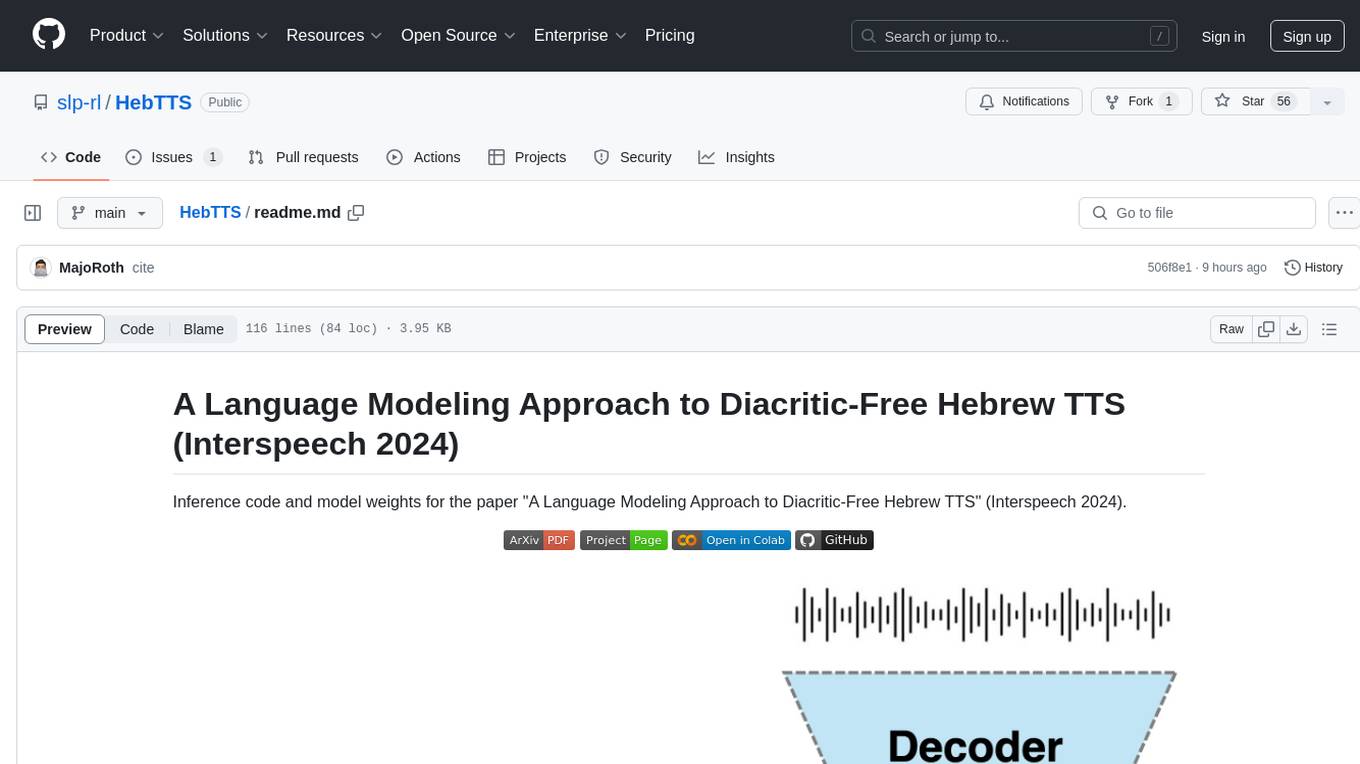
HebTTS
HebTTS is a language modeling approach to diacritic-free Hebrew text-to-speech (TTS) system. It addresses the challenge of accurately mapping text to speech in Hebrew by proposing a language model that operates on discrete speech representations and is conditioned on a word-piece tokenizer. The system is optimized using weakly supervised recordings and outperforms diacritic-based Hebrew TTS systems in terms of content preservation and naturalness of generated speech.
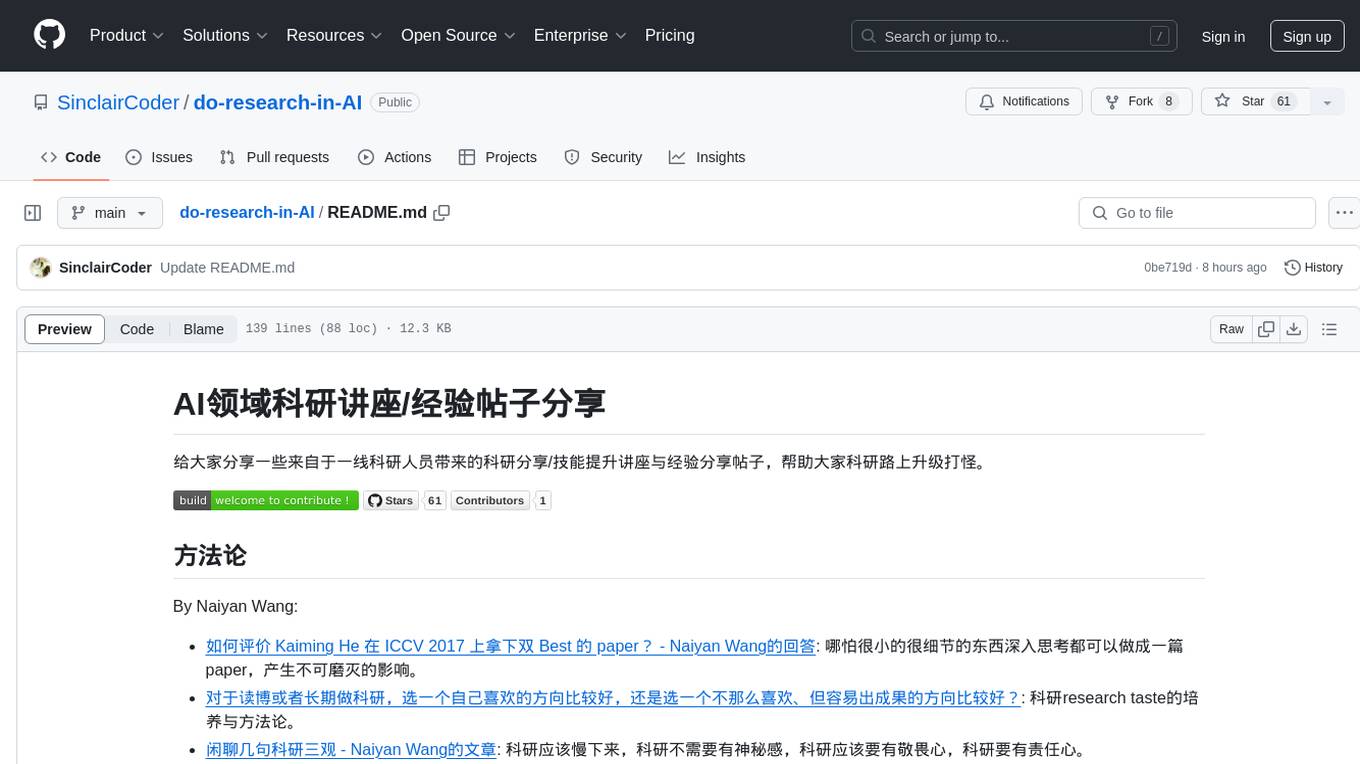
do-research-in-AI
This repository is a collection of research lectures and experience sharing posts from frontline researchers in the field of AI. It aims to help individuals upgrade their research skills and knowledge through insightful talks and experiences shared by experts. The content covers various topics such as evaluating research papers, choosing research directions, research methodologies, and tips for writing high-quality scientific papers. The repository also includes discussions on academic career paths, research ethics, and the emotional aspects of research work. Overall, it serves as a valuable resource for individuals interested in advancing their research capabilities in the field of AI.




